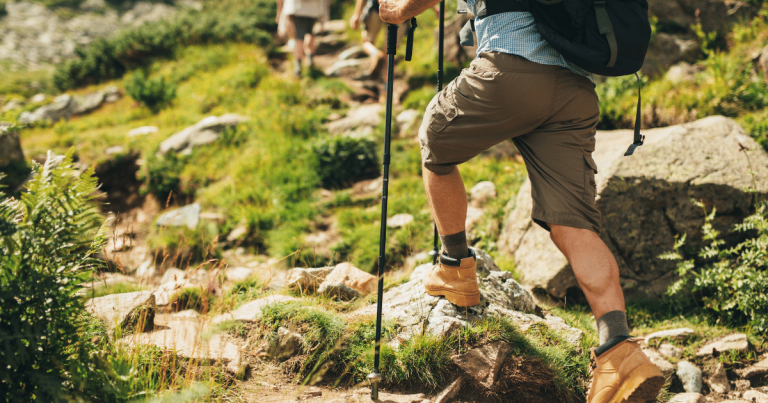Overcoming Altitude Sickness at Lake Tahoe
Lake Tahoe is a wonderful destination for people looking to escape the natural hustle and bustle of the city.

It is a beautiful place that provides an idyllic location for skiing, snowmobiling, and having some fun. The stunning views and adventures that come with the trip are incomparable. However, the sudden change in altitude can lead to altitude sickness.
What is Altitude Sickness?
Altitude sickness is a medical condition that travelers experience when they change elevation too quickly, resulting in reduced oxygen pressure. This lack of oxygen leads to various symptoms like headaches, fatigue, dizziness, and even nausea. If untreated, it may cause severe complications and can be life-threatening. Getting altitude sickness can make the most anticipated trip unpleasant, but it can be avoided if you are aware of what causes it.
What Causes Altitude Sickness?
Altitude sickness occurs when you travel to a higher elevation, such as Lake Tahoe, too quickly without allowing your body to adjust. As you gain altitude, the atmospheric pressure gradually decreases, leading to lower oxygen levels. This low-oxygen environment can eventually lead to altitude sickness. Lack of acclimatization is the primary cause of altitude sickness. While not everyone will experience altitude sickness in Lake Tahoe, it’s best to be prepared in a manner and do everything possible to avoid it.
How to avoid Altitude Sickness when we visit Lake Tahoe?
The best way to avoid altitude sickness when you visit Lake Tahoe is to acclimatize. Start by spending your first day in Lake Tahoe around 6,000-8,000 feet, and avoid any strenuous activities. Also, drink plenty of water to stay hydrated, as dehydration can worsen altitude sickness symptoms. Additionally, avoid consuming alcohol, smoking cigarettes, and eating fatty or sugar-laden foods. Take care of your body and rest it whenever you need to, as overexertion can contribute to an altitude sickness outbreak.

What to do if you got altitude sickness?
The symptoms of altitude sickness can range from mild to severe. If you experience mild symptoms like headache or fatigue, take a break and rest until you feel better. You can try drinking plenty of water and taking an over-the-counter painkiller to relieve your symptoms. If you have severe mountain sickness, it’s best to descend to a lower altitude immediately. In such cases, oxygen therapy may be required, and it’s best to seek the help of a medical expert. Do not ignore altitude sickness symptoms, as they can worsen and endanger your health.
Interesting Facts about Altitude Sickness
Some popular travelers’ destinations, like Lake Tahoe, have a higher chance of causing altitude sickness due to the decreased oxygen levels at higher elevations. Anyone can experience altitude sickness when their body fails to acclimatize. That’s why even the seasoned mountaineers sometimes experience altitude sickness, and they heed the mountains’ and their body warnings. The symptoms of altitude sickness can vary from person to person. Some people may experience severe symptoms, while others may have mild ones.
Frequent inquiries
How long does it take to acclimatize to higher altitudes?
The process of acclimatization varies from person to person, but generally, your body can start to adapt to higher altitudes in 1 to 3 days. However, full acclimatization can take weeks or even months. Factors such as individual physiology, the altitude you’ve ascended to, how fast you’ve made the ascent, and the altitude at which you sleep can significantly influence the acclimatization process. To increase your comfort and safety, it’s recommended to ascend slowly, taking days, if not longer, to increase your elevation, and to sleep at an altitude lower than the highest point you’ve reached in a day.
When should I seek help for altitude sickness?
You should seek immediate medical attention for altitude sickness if any of the following symptoms present: severe headache that doesn’t improve with over-the-counter pain medication, nausea or vomiting, fatigue or weakness, shortness of breath at rest, confusion, unsteadiness, or loss of consciousness. If you are at a high altitude and start experiencing these symptoms, it’s crucial to descend to a lower altitude as quickly and safely as possible. Altitude sickness can be life-threatening if severe and untreated, so it’s important to take all symptoms seriously.

Conclusion
Lake Tahoe is an amazing holiday destination that attracts thousands of voyagers every year. However, the high altitude can put you at risk of altitude sickness. Being aware of what altitude sickness is, what causes it, and how to prevent it can help avoid a potentially unpleasant experience on your trip. Make sure that you acclimatize gradually, drink plenty of water, and avoid things that can exacerbate altitude sickness symptoms. Enjoy the beauty of Lake Tahoe safely and healthily with these tips!







